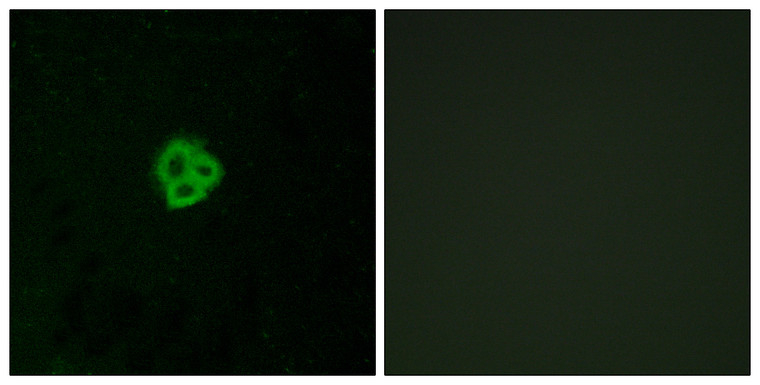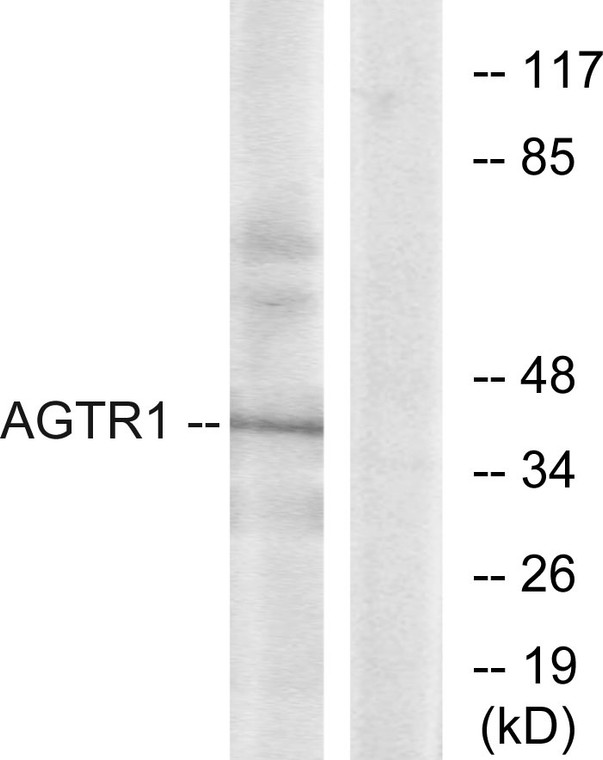| Host: |
Rabbit |
| Applications: |
WB/IHC/IF/ELISA |
| Reactivity: |
Human/Mouse/Rat |
| Note: |
STRICTLY FOR FURTHER SCIENTIFIC RESEARCH USE ONLY (RUO). MUST NOT TO BE USED IN DIAGNOSTIC OR THERAPEUTIC APPLICATIONS. |
| Short Description: |
Rabbit polyclonal antibody anti-Type-1 angiotensin II receptor (101-150 aa) is suitable for use in Western Blot, Immunohistochemistry, Immunofluorescence and ELISA research applications. |
| Clonality: |
Polyclonal |
| Conjugation: |
Unconjugated |
| Isotype: |
IgG |
| Formulation: |
Liquid in PBS containing 50% Glycerol, 0.5% BSA and 0.02% Sodium Azide. |
| Purification: |
The antibody was affinity-purified from rabbit antiserum by affinity-chromatography using epitope-specific immunogen. |
| Concentration: |
1 mg/mL |
| Dilution Range: |
WB 1:500-1:2000IHC 1:100-1:300IF 1:200-1:1000ELISA 1:10000 |
| Storage Instruction: |
Store at-20°C for up to 1 year from the date of receipt, and avoid repeat freeze-thaw cycles. |
| Gene Symbol: |
AGTR1 |
| Gene ID: |
185 |
| Uniprot ID: |
AGTR1_HUMAN |
| Immunogen Region: |
101-150 aa |
| Specificity: |
AT1 Polyclonal Antibody detects endogenous levels of AT1 protein. |
| Immunogen: |
The antiserum was produced against synthesized peptide derived from the human AGTR1 at the amino acid range 101-150 |
| Post Translational Modifications | C-terminal Ser or Thr residues may be phosphorylated. |
| Function | Receptor for angiotensin II, a vasoconstricting peptide, which acts as a key regulator of blood pressure and sodium retention by the kidney. The activated receptor in turn couples to G-alpha proteins G(q) (GNAQ, GNA11, GNA14 or GNA15) and thus activates phospholipase C and increases the cytosolic Ca(2+) concentrations, which in turn triggers cellular responses such as stimulation of protein kinase C. (Microbial infection) During SARS coronavirus-2/SARS-CoV-2 infection, it is able to recognize and internalize the complex formed by secreted ACE2 and SARS-CoV-2 spike protein through DNM2/dynamin 2-dependent endocytosis. |
| Protein Name | Type-1 Angiotensin Ii ReceptorAt1arAt1brAngiotensin Ii Type-1 ReceptorAt1 Receptor |
| Database Links | Reactome: R-HSA-375276Reactome: R-HSA-416476Reactome: R-HSA-8856825Reactome: R-HSA-8856828 |
| Cellular Localisation | Cell MembraneMulti-Pass Membrane Protein |
| Alternative Antibody Names | Anti-Type-1 Angiotensin Ii Receptor antibodyAnti-At1ar antibodyAnti-At1br antibodyAnti-Angiotensin Ii Type-1 Receptor antibodyAnti-At1 Receptor antibodyAnti-AGTR1 antibodyAnti-AGTR1A antibodyAnti-AGTR1B antibodyAnti-AT2R1 antibodyAnti-AT2R1B antibody |
Information sourced from Uniprot.org
12 months for antibodies. 6 months for ELISA Kits. Please see website T&Cs for further guidance










